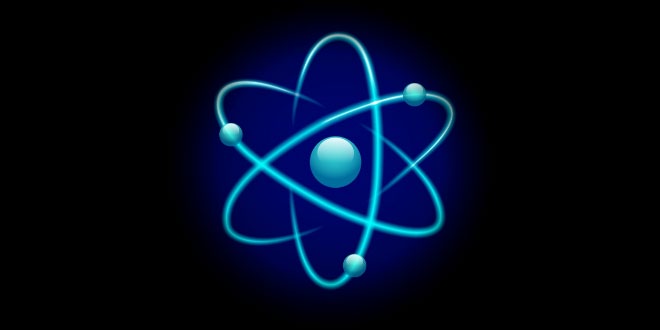Question: Define law of conservation of mass.
Answer: In a chemical reaction mass can neither be created nor destroyed.
E.g., 2Na + Cl2 —–> 2NaCl
2 x 23 + 2 x 35.5 ——> 2(23 + 35.5)
Question: Explain law of constant proportion.
Answer: In a chemical substance the elements are always present in definite proportions by mass.
E.g., In water, the ratio of the mass of hydrogen to the mass of oxygen H:O is always 1:8
Question: Name the scientist who gave:
- Law of conservation of mass.
- Law of constant proportions.
Answer:
- Antoine Lavoisier
- Joseph Proust
Question: Name these elements represented by the following symbols?
Answer:
Hg → Mercury
Pb → Lead
Au → Gold
Ag → Silver
Sn → Tin
Question: What is meant by automicity? Explain with 2 eg.
Answer: The number of atoms present in one molecule of an element of is called its automicity.
Eg:- Suphur = 8
Ozone = 3
Question: Who coined the term atom?
Answer: John Dalton coined the term atomt
Question: Define atom.
Answer: The smallest particle of matter, which can take part in a chemical reaction is called atom.
Question: Define molecule.
Answer: The smallest particle of an element or compound which can exist independently is called molecule.
Question: Define atomicity.
Answer: The number of atoms constituting a molecule is known as its atomicity.
Question: What is atomic mass unit?
Answer: The sum of the atomic masses of all the atoms in a molecule of the substance is expressed.in atomic mass unit. E.g., H20 = 1 x 2 + 16 = 18 amu
Question: How do atoms exist?
Answer: Atoms exist in the form of atom, molecule or ions.
Question: Give the atomicity of phosphorous and nitrogen.
Answer: The atomicity of phosphorus is P4 i.e., 4.
The atomicity of nitrogen is N2 i.e., 2.
Question: What is an ion?
Answer: Charged atom is called as an ion. The ion can be positively charged called cation or negatively charged called anion.
Question: Give one example of cation and anion.
Answer: Cation => Na+
Anion => Cl–
Question: Give one difference between cation and anion.
Answer: Cations are positively charged ion.
Anions are negatively charged ion.
Question: Give the chemical formula for ammonium sulphate.
Answer: Ammonium sulphate
NH4+ SO42-
Chemical formula —-> (NH4)2S04.
Question: What is Avogadro’s constant?
Answer: The Avogadro’s constant (6.022 x 1023) is defined as the number of atoms that are present in exactly 12 g of carbon-12.
Question: Find the molecular mass of H20.
Answer: Molecular mass of H20
= (2 x 1) + (16)
= 2 + 16 = 18 u
Question: Give the unit to measure size of atom and give size of hydrogen atom.
Answer: The unit to measure size of atom, is nanometer, size of hydrogen atom is 10-10m.
Question: What is IUPAC, give its one function?
Answer: IUPAC is International Union for Pure and Applied Chemistry. It approves the names of elements.
Question: Give the Latin name for sodium, potassium, gold and mercury.
Answer: Sodium —> Natrium, Gold —> Aurum
Potassium —> Kalium, Mercury —> Hydrargyrum
Question: What is the ratio by mass of combining elements in H20, C02 and NH3?
Answer: H2O ratio by mass of combining elements 2 : 16 —>1 : 8 (H : O)
C02 ratio by mass of combining elements 12 : 32—> 3 : 08 (C : O)
NH3 ratio by mass of combining elements 14 : 3—>14 : 3 (N : H)
Question: Define valency and give the valency for the following elements: Magnesium, Aluminium, Chlorine and Copper.
Answer: Valency: The combining capacity of an element is called its valency.
Valency of the following elements:
Magnesium – 2
Aluminium – 3
Chlorine – 1
Copper – 2
Question: What is polyatomic ton? Give one example.
Answer: A group of atoms carrying a charge is known as a polyatomic ion.
E.g., Ammonium – NH4+
Nitrate – N03–
Question: Write down the formula for: Copper nitrate, calcium sulphate and aluminium hydroxide.
Answer: Chemical formula:
Copper nitrate —> Cu(N03)
Calcium sulphate —> CaS04 Aluminium hydroxide Al(OH)3
Question: It is possible to see atoms these days? Explain.
Answer: The Size of atom is so small that it cannot be seen by naked eye or by simple optical instruments.
To see atoms of different elements a special type of microscope called Scanning Tunneling microscope (STM) is used.
Question: Write the formula of the following compounds. Water, Ammoniua, Methane, Sulphur Dioxide, Ethanol.
Answer:
Water → H2 O → Hydrogen & Oxygen
Ammoniua → NH3 → Nitrogen & Hydrogen
Methane → CH4 → Carbon & Hydrogen
Sulphur Dioxide → SO2 → Sulphur & Oxygen
Ethanol → C2H5OH → Carbon & Hydrogen and Oxygen
Question: What is formula unit mass? How is it different from molecular mass?
Answer: The formula unit mass of a substance is a sum of the atomic masses of all atoms in a formula unit of a compound. The constituent particles of formula unit mass are ions and the constituent particles of molecular mass are atoms.
 Class Notes NCERT Solutions for CBSE Students
Class Notes NCERT Solutions for CBSE Students



